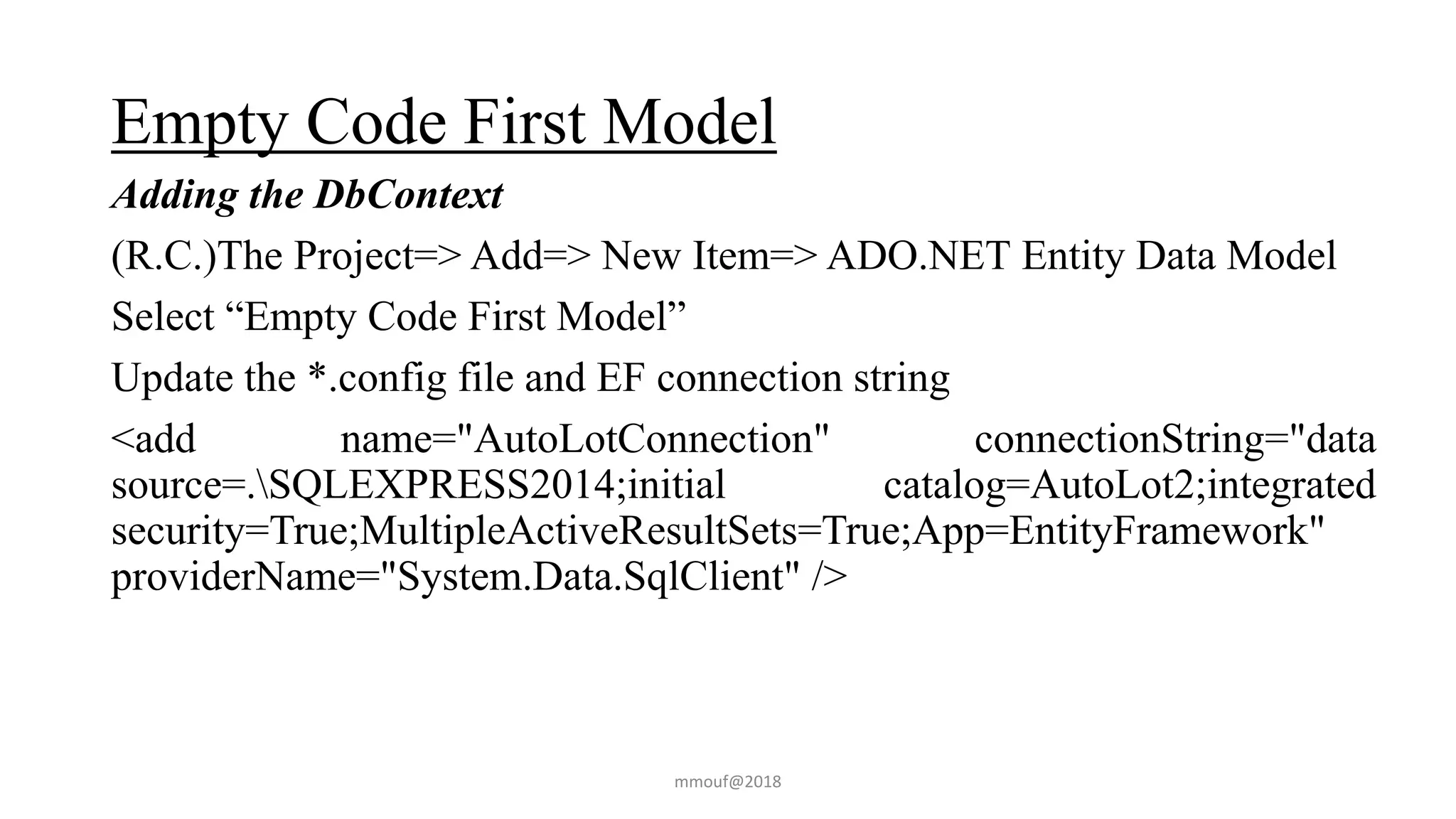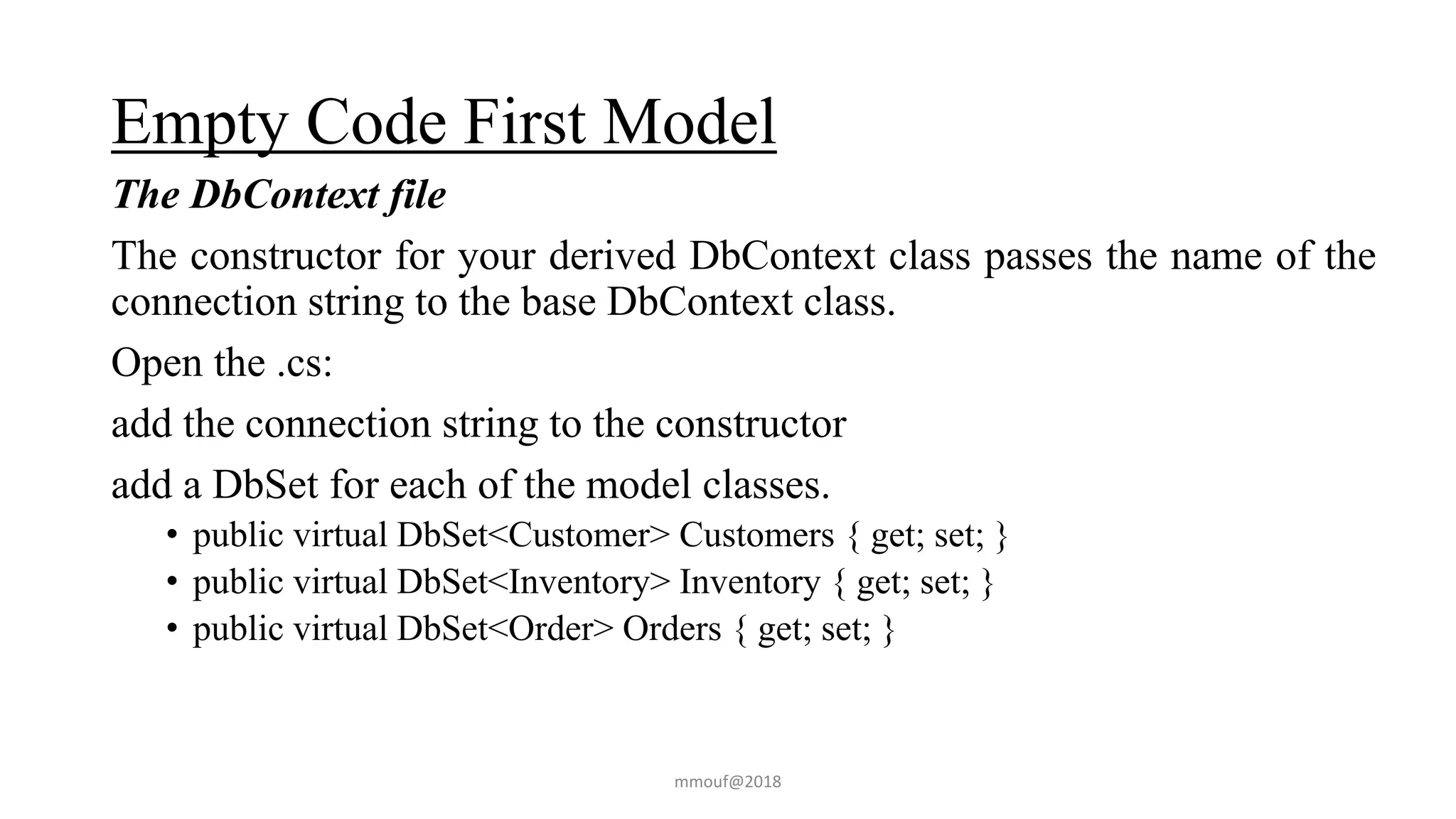The document discusses Entity Framework Code First concepts including entities, DbContext, DbSet, and navigation properties. It provides examples of how to map existing database tables to Code First classes using data annotations. It also demonstrates how to perform basic CRUD operations using Code First including adding, querying, updating and deleting records. The document shows how to generate a Code First model from an existing database as well as how to create an empty Code First model and map classes using data annotations and navigation properties.

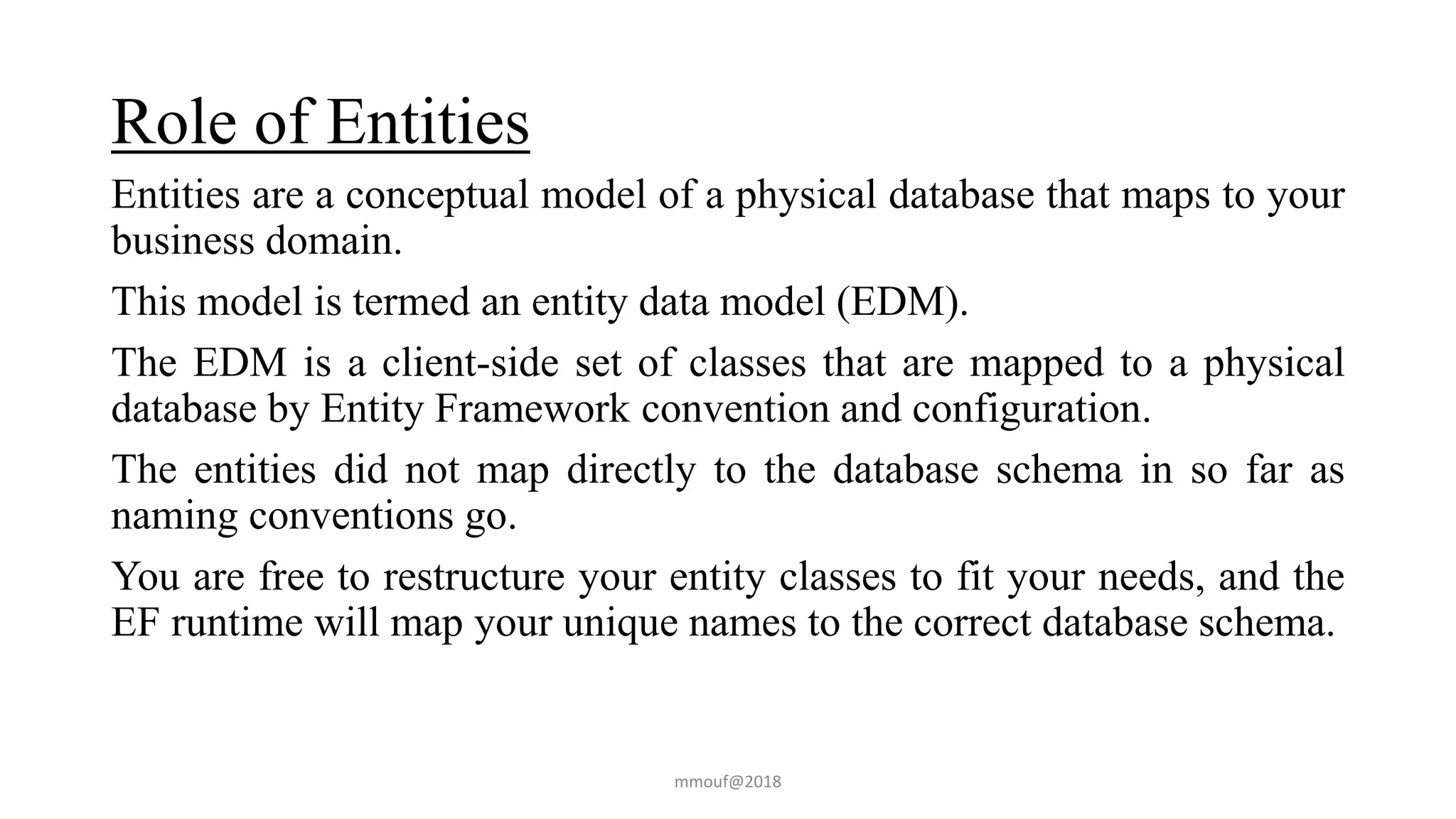
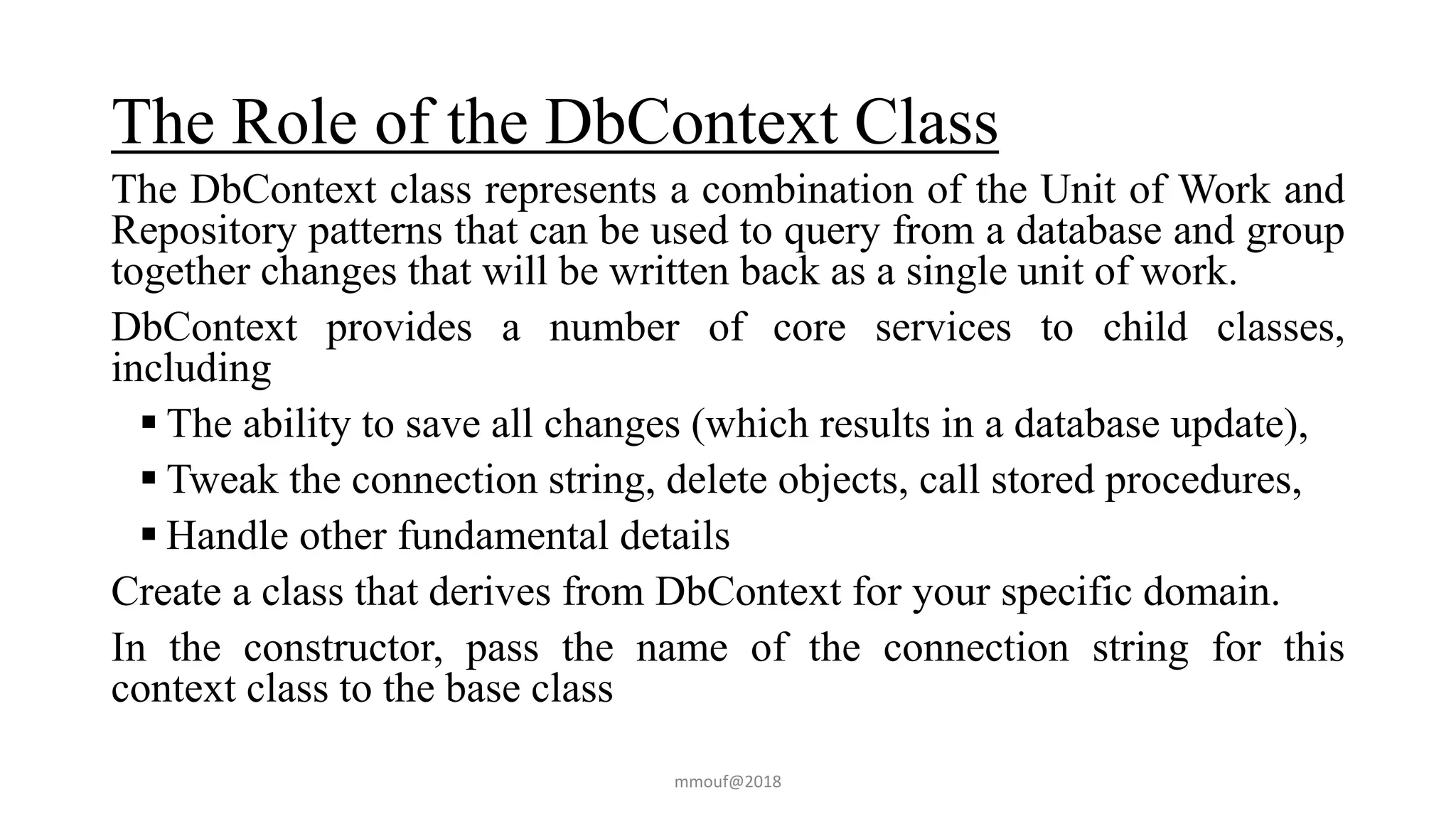
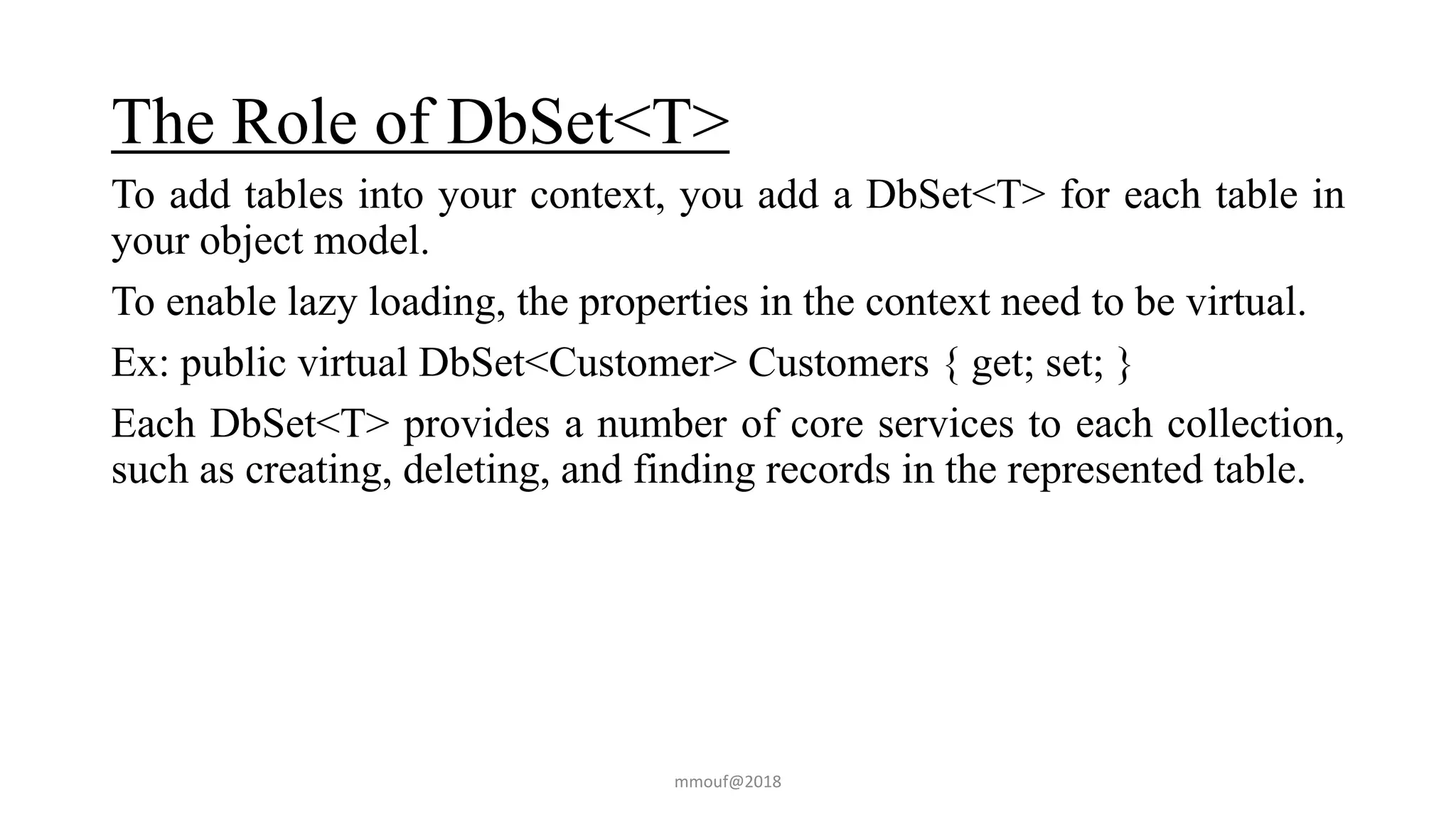

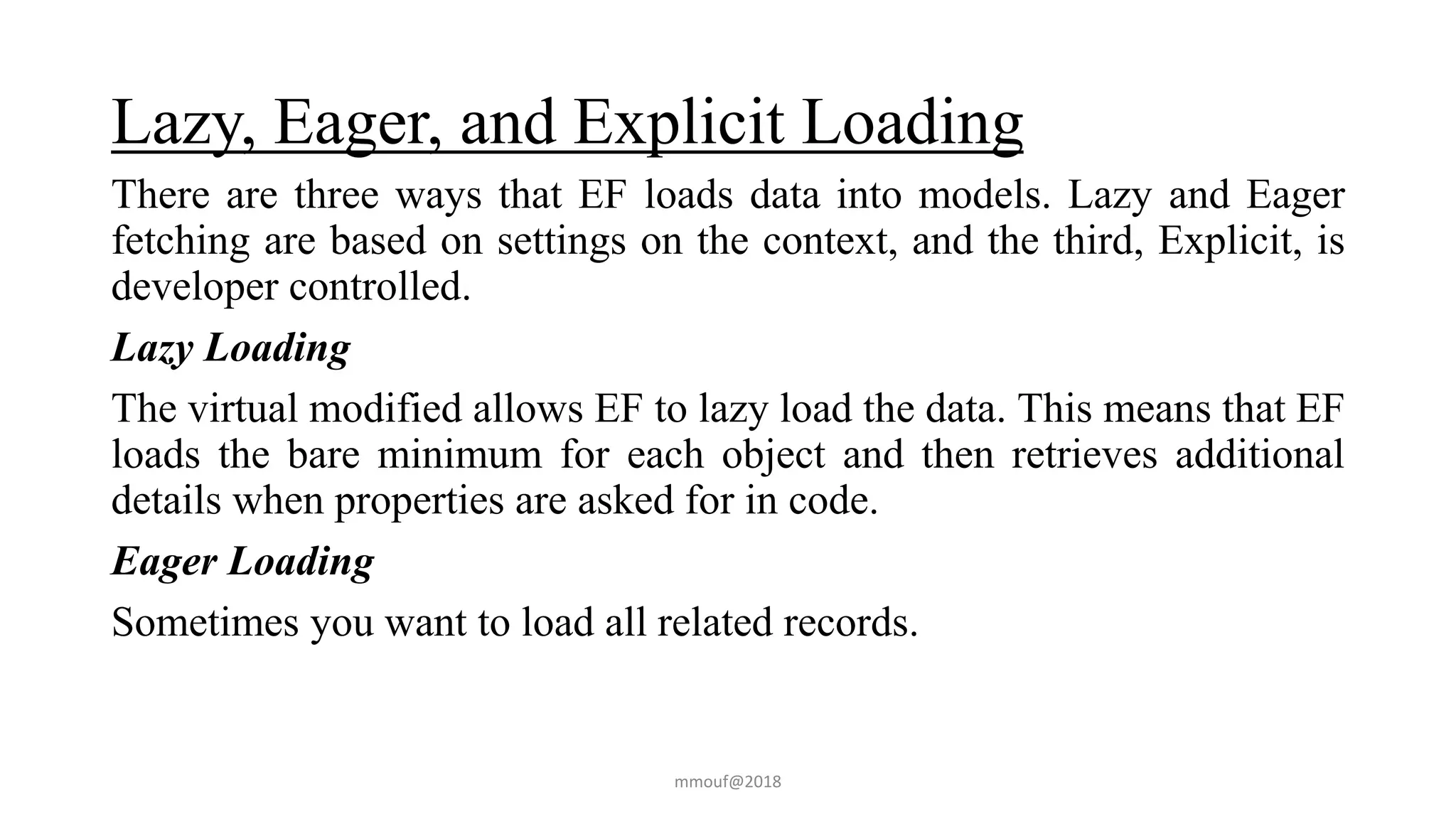


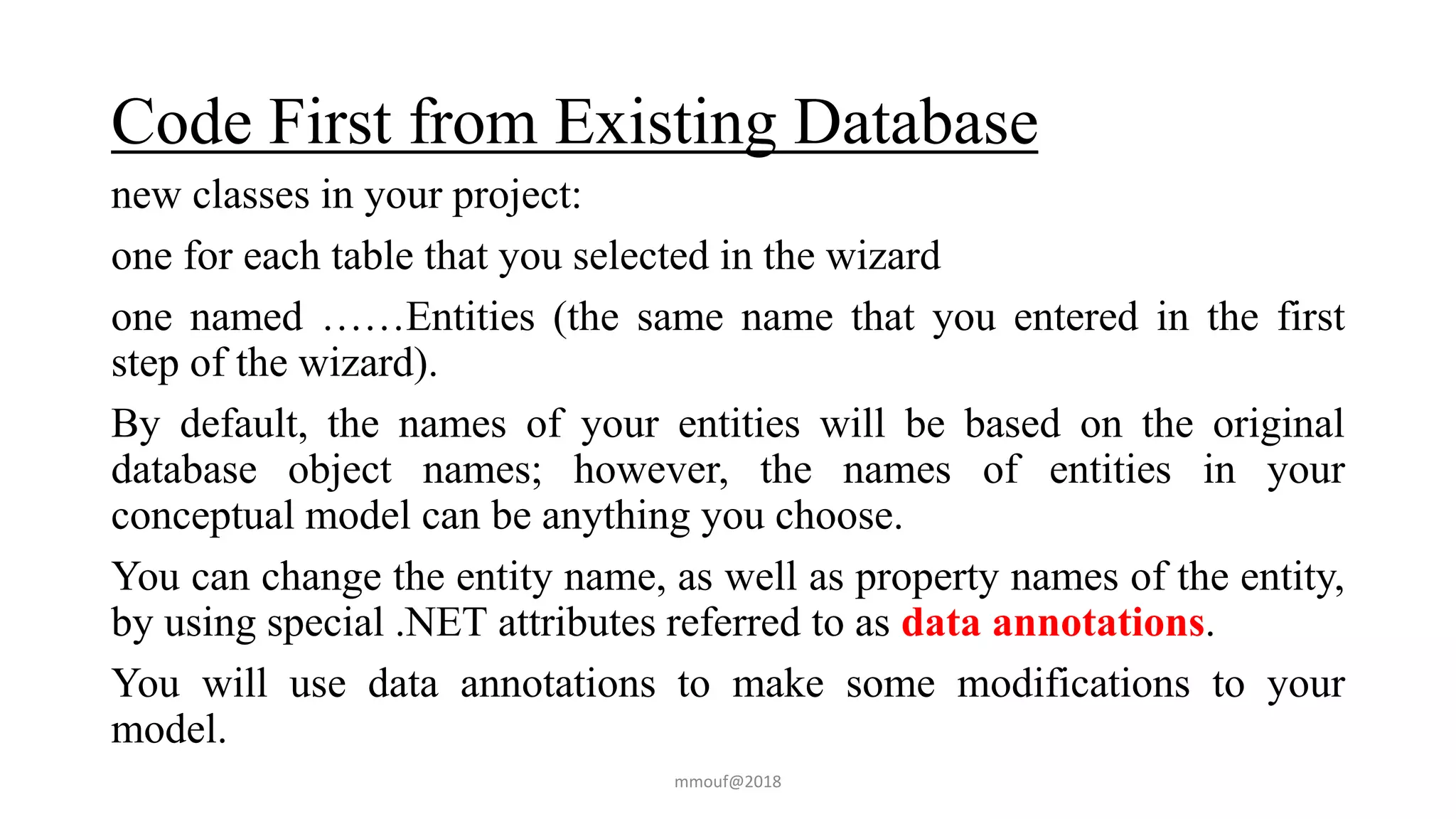
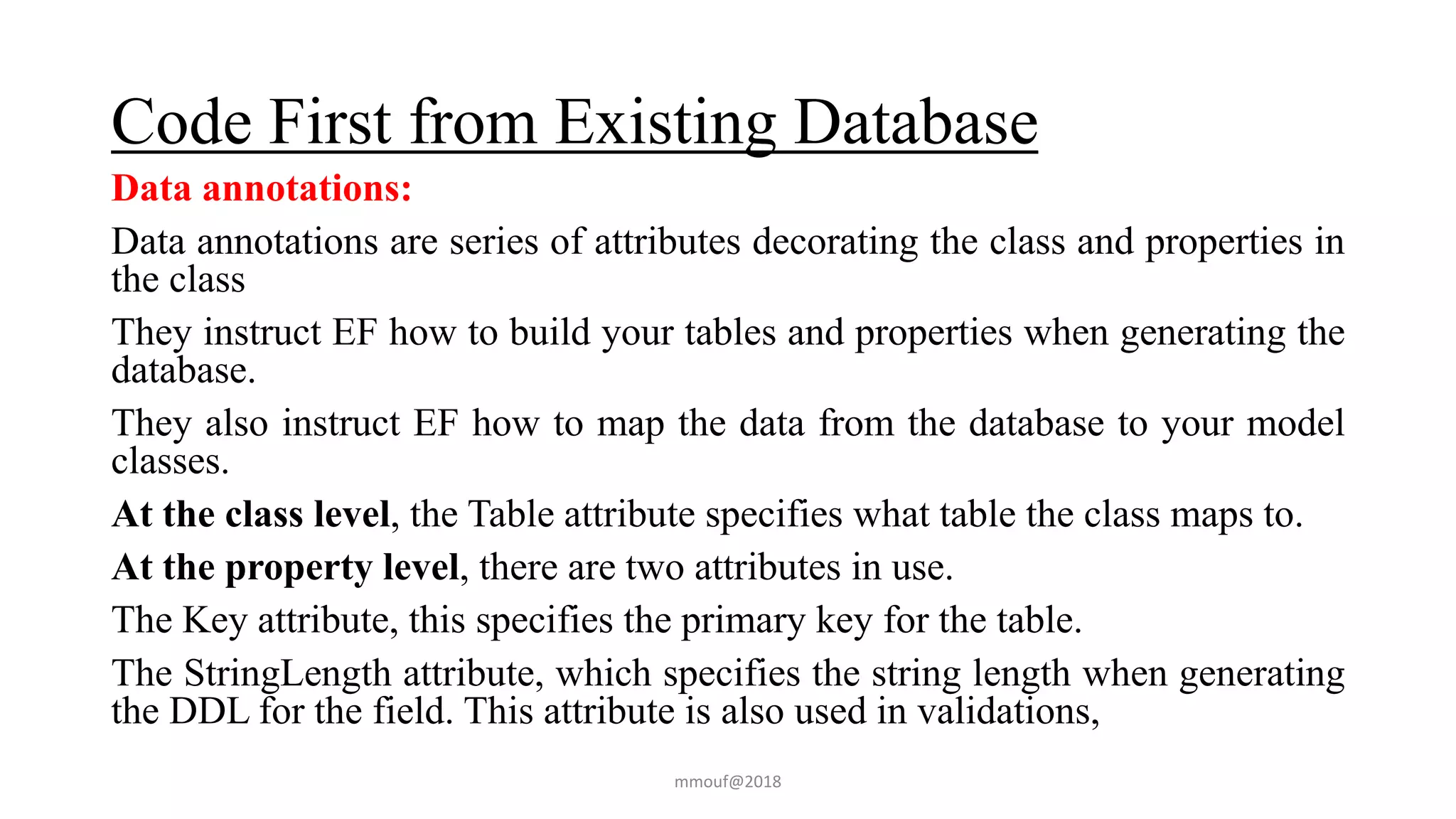
![Code First from Existing Database
Changing the default mapping
The [Table("Inventory")] attribute specifies that the class maps to the
Inventory table. With this attribute in place, we can change the name of
the class to anything we want.
Change the class name (and the constructor) to Car.
In addition to the Table attribute, EF also uses the Column attribute.
By adding the [Column("PetName")] attribute to the PetName property,
we can change the name of the property to CarNickName.
mmouf@2018](https://image.slidesharecdn.com/intake38dataaccess5-180201110615/75/Intake-38-data-access-5-11-2048.jpg)
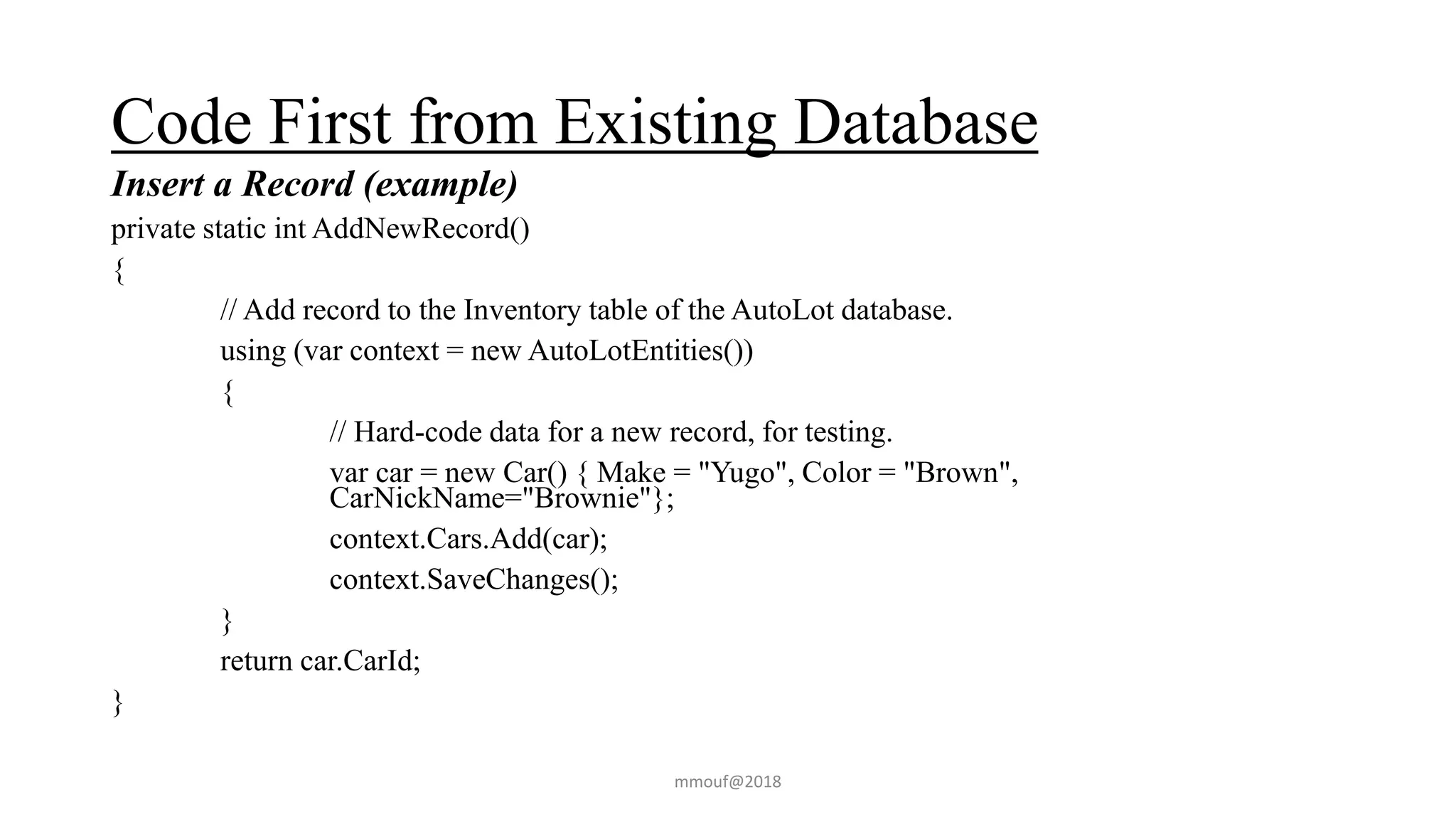
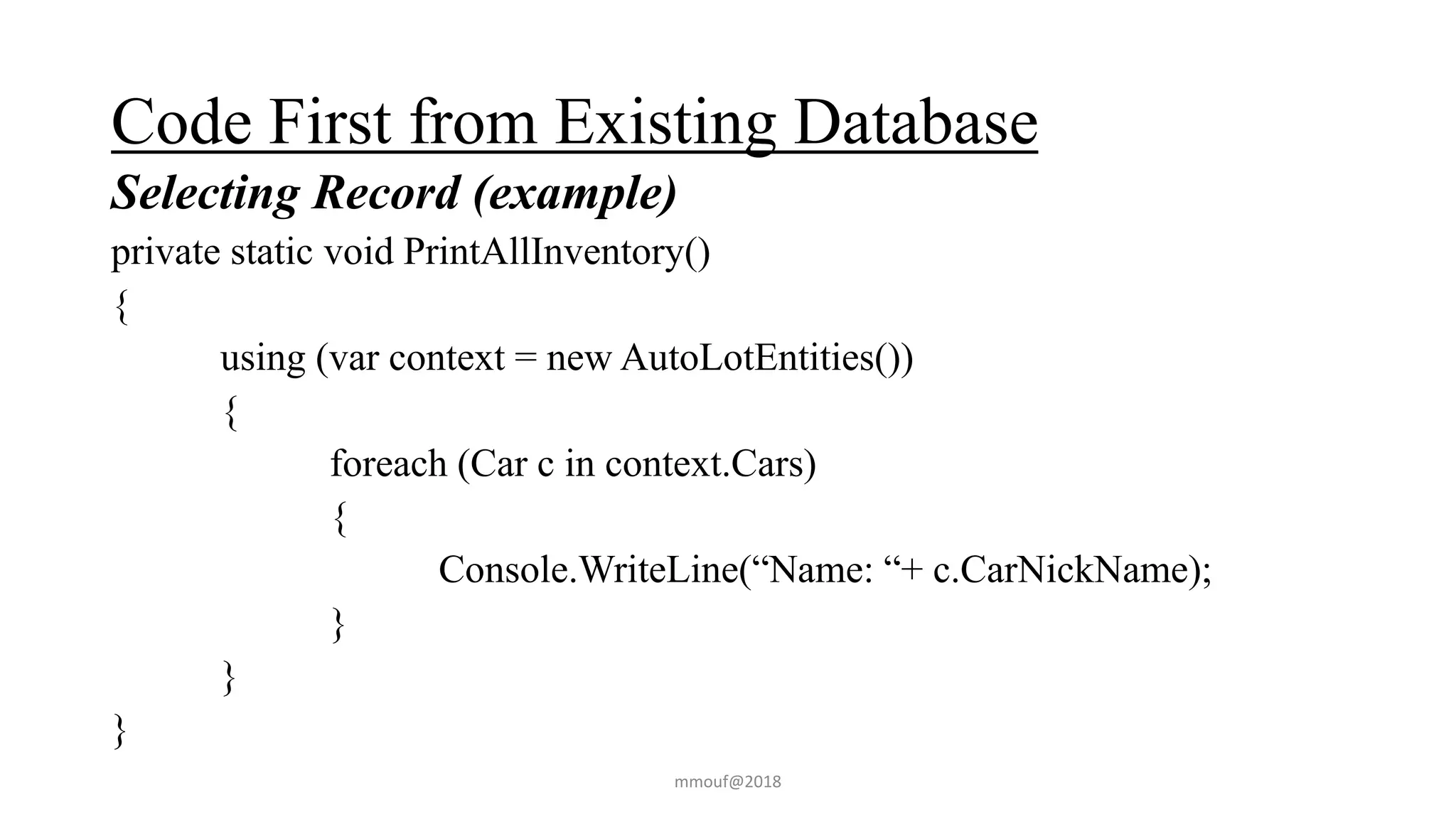
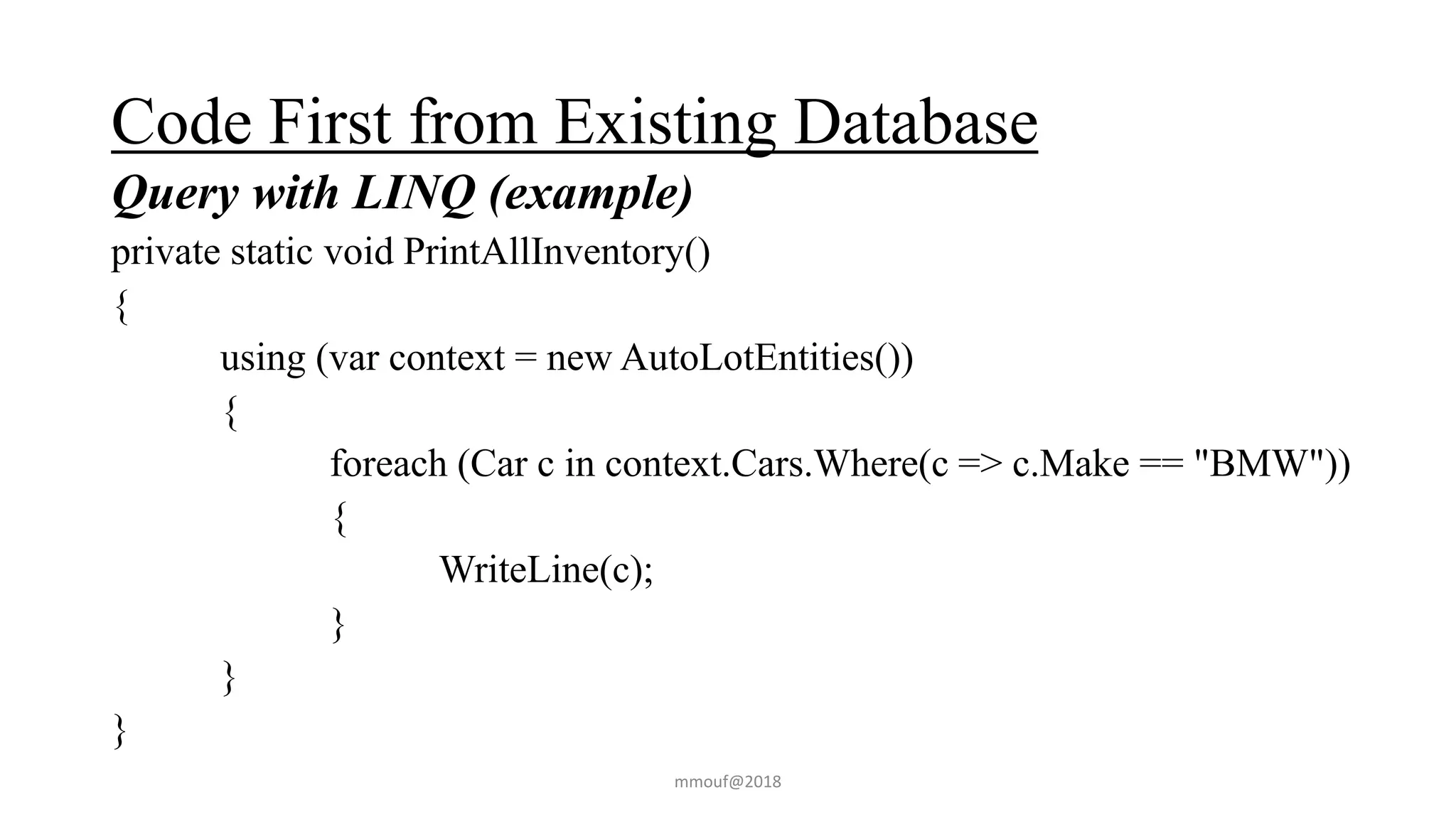
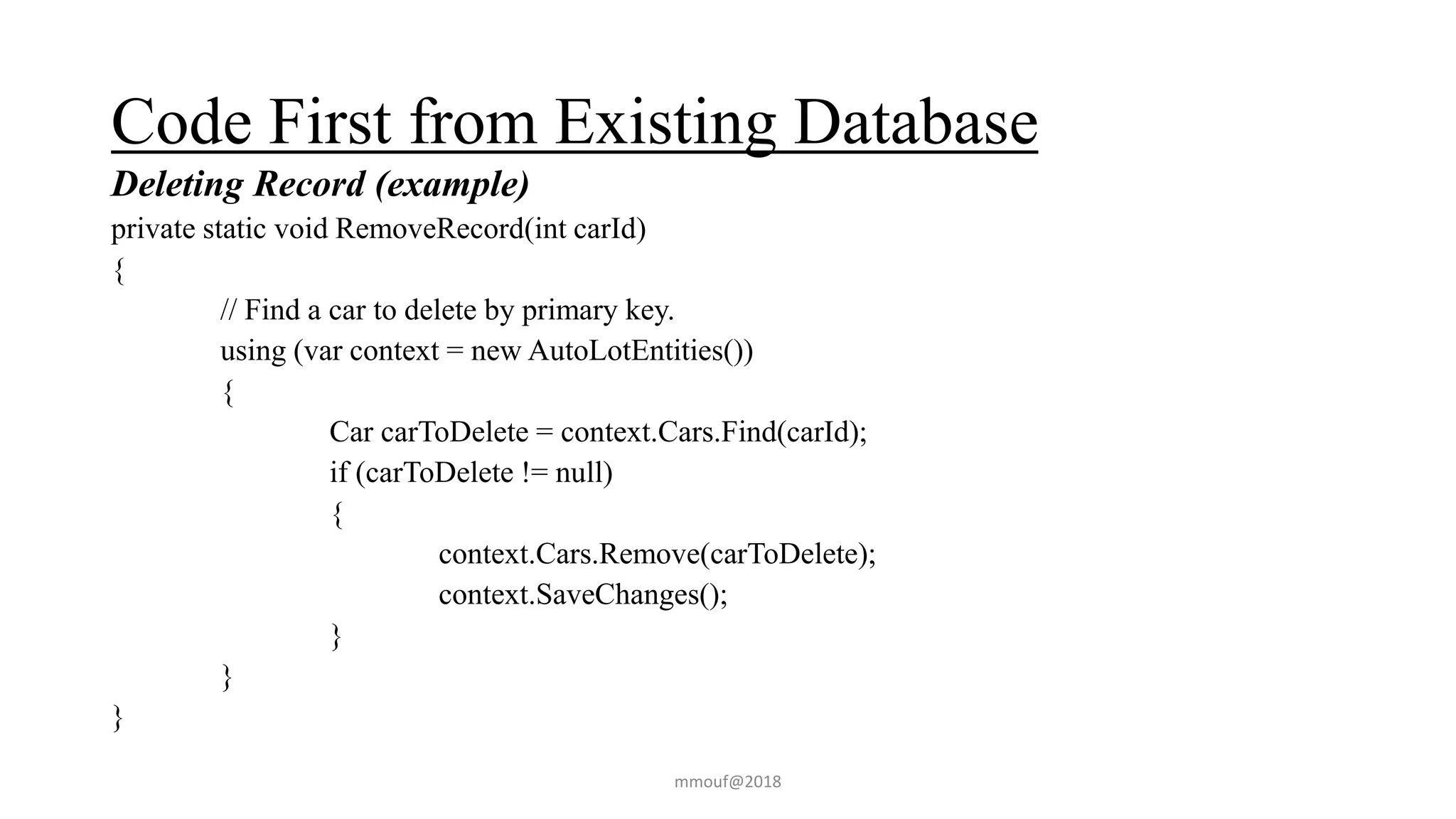

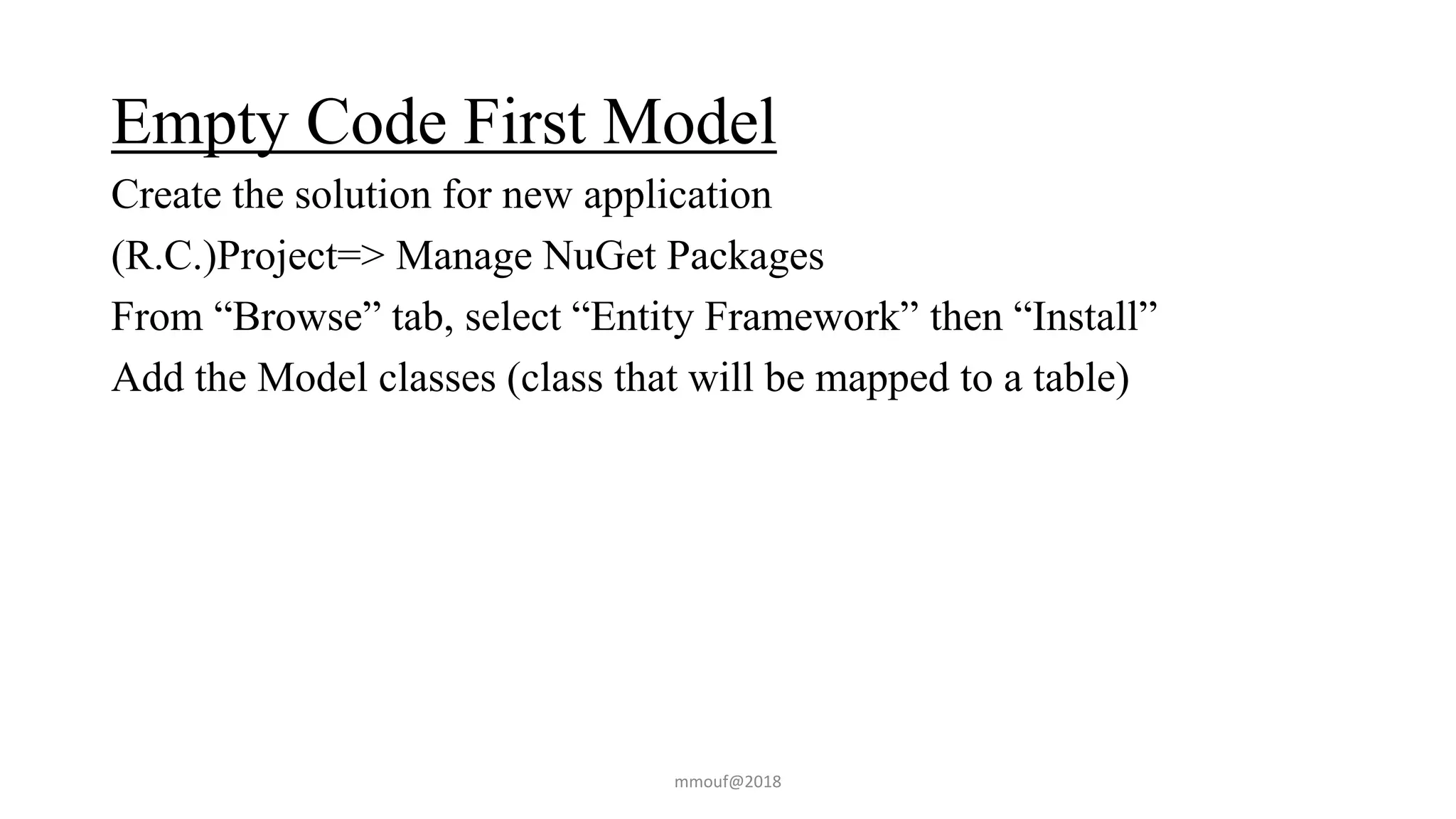
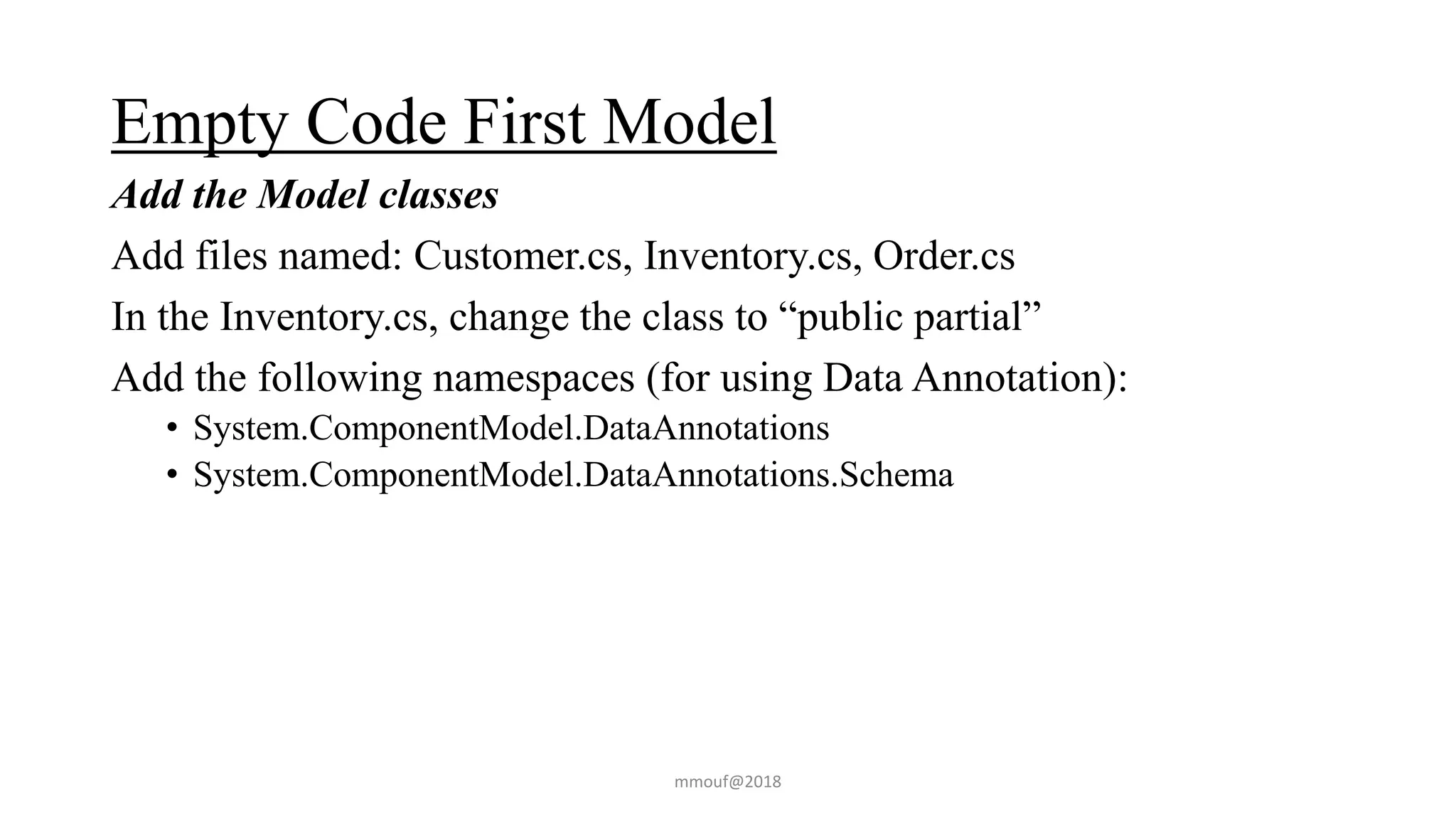
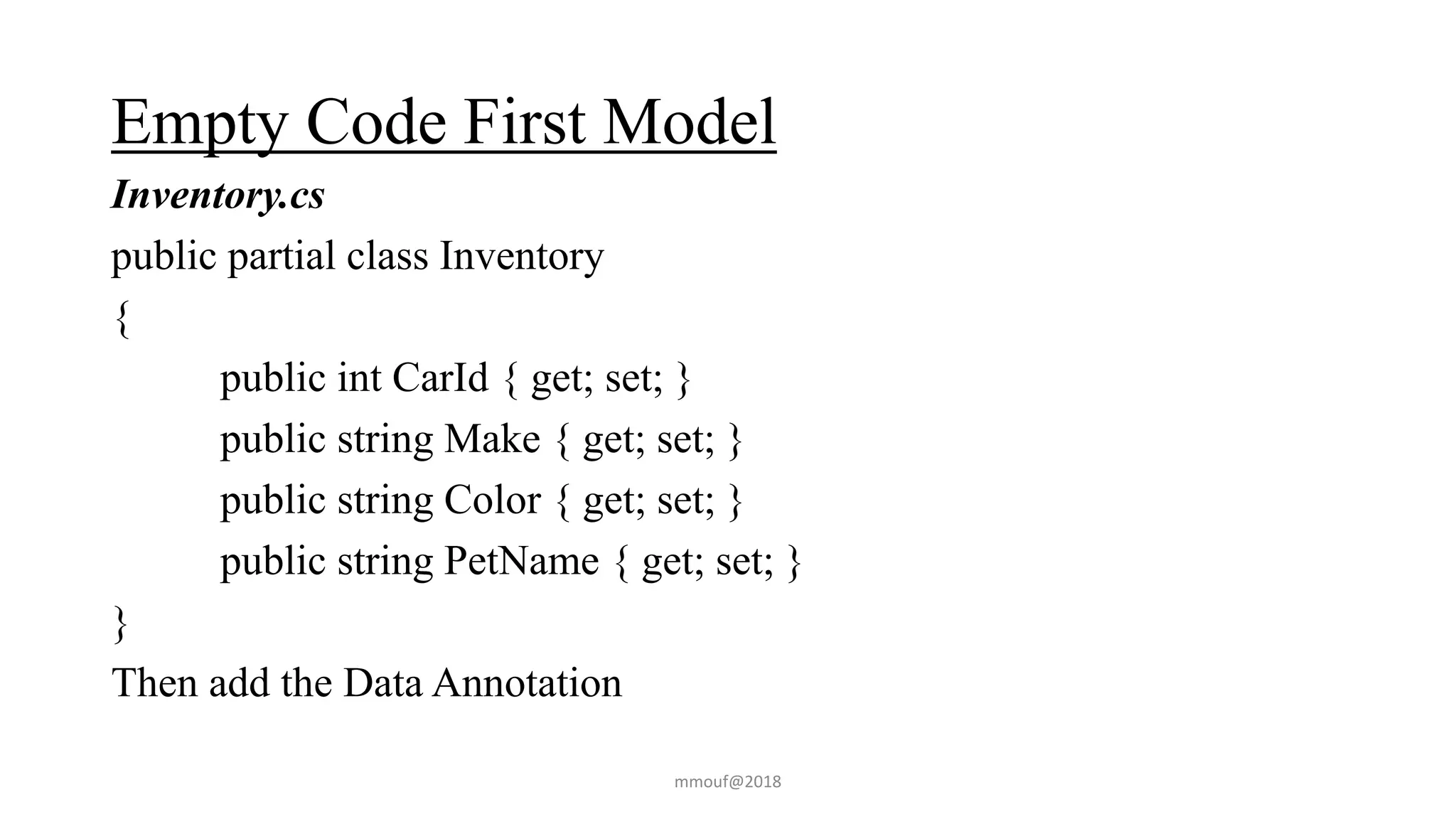
![Empty Code First Model
Inventory.cs
[Table("Inventory")]
public partial class Inventory
{
[Key]
public int CarId { get; set; }
[StringLength(50)]
public string Make { get; set; }
[StringLength(50)]
public string Color { get; set; }
[StringLength(50)]
public string PetName { get; set; }
}
mmouf@2018](https://image.slidesharecdn.com/intake38dataaccess5-180201110615/75/Intake-38-data-access-5-20-2048.jpg)
![Empty Code First Model
Add the navigation properties
[Table("Inventory")]
public partial class Inventory
{
[Key]
public int CarId { get; set; }
[StringLength(50)]
public string Make { get; set; }
[StringLength(50)]
public string Color { get; set; }
[StringLength(50)]
public string PetName { get; set; }
public virtual ICollection<Order> Orders { get; set; } = new HashSet<Order>();
}
mmouf@2018](https://image.slidesharecdn.com/intake38dataaccess5-180201110615/75/Intake-38-data-access-5-21-2048.jpg)
![Empty Code First Model
Customer.cs
public partial class Customer
{
[Key]
public int CustId { get; set; }
[StringLength(50)]
public string FirstName { get; set; }
[StringLength(50)]
public string LastName { get; set; }
[NotMapped]
public string FullName => FirstName + " " + LastName;
public virtual ICollection<Order> Orders { get; set; } = new HashSet<Order>();
}
mmouf@2018](https://image.slidesharecdn.com/intake38dataaccess5-180201110615/75/Intake-38-data-access-5-22-2048.jpg)
![Empty Code First Model
Order.cs
public partial class Order
{
[Key, Required, DatabaseGenerated(DatabaseGeneratedOption.Identity)]
public int OrderId { get; set; }
[Required]
public int CustId { get; set; }
[Required]
public int CarId { get; set; }
[ForeignKey("CustId")]
public virtual Customer Customer { get; set; }
[ForeignKey("CarId")]
public virtual Inventory Car { get; set; }
}
mmouf@2018](https://image.slidesharecdn.com/intake38dataaccess5-180201110615/75/Intake-38-data-access-5-23-2048.jpg)
